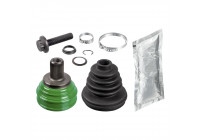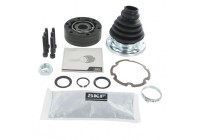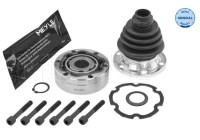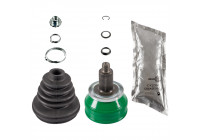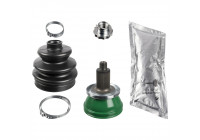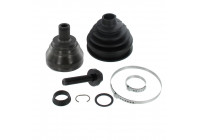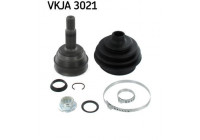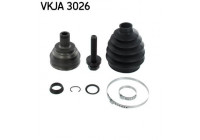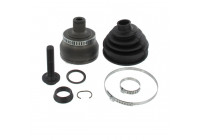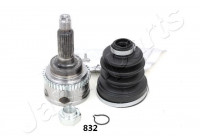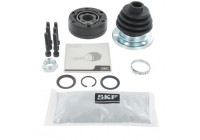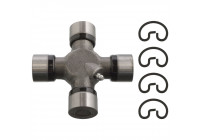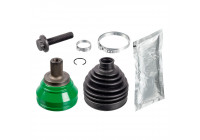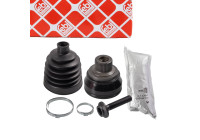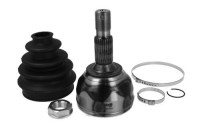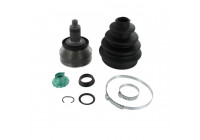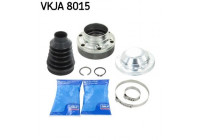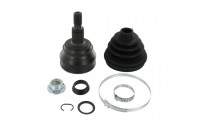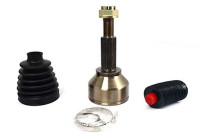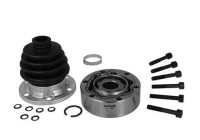CV joint
A frequently asked question that we get is ´what is a CV joint?´. A CV joint,
also known as a constant velocity joint or homokinetic, is part of the drive shaft . Its task is to transfer the driving force from the differential to the
wheels in a non-straight line. Both the driveshaft and the CV joints wear over
time. Not without reason, they are constantly and heavily used while driving. A
CV joint can wear extra fast when the driveshaft cover, also known as a CV boot
or CV gaiter, is torn or broken. The CV boot is a rubber cover that is placed
around the joints, the CV joints and the driveshaft. If the CV boot is broken,
grease from the CV joint will be lost faster. If this is the case, then the
part can no longer be optimally protected against dust, dirt and moisture and
therefore is prone to fail more quickly. But how do you recognise a failing CV
joint?
CV joint
failure symptoms Exposure to dirt and
moisture is the main cause of CV joint failure. Such exposure will cause joints
to corrode, and they become especially vulnerable when the CV boot tears or
cracks. You can recognize a broken CV joint by a number of symptoms. The most
common symptom is a cracking, clunking or ticking noise when accelerating or
taking a sharp turn. To find out if it is actually your CV joint that is
failing, you can do a little test. You can start off by driving in a circle on
an abandoned parking lot. There is a good chance that you will hear a ticking
sound. Next, steer your car into a straight line, the sound should now be gone.
Another way is to inspect the part itself. To manually inspect the part, turn
the wheel all the way to the left or right. This gives you the ability to have
a proper look at the part. Do you see a broken CV boot, dirt and grease? Then
you will have to replace the CV joint and de CV boot.
Replacing a CV joint You can replace a worn CV
joint yourself if you have some technical knowledge (intermediate level).
Before replacing the car part, we recommend that you check the entire wheel suspension for play or wear. In some cases, there may be more going on. You can
then choose to replace the entire driveshaft including CV joints. Before you
are able to replace the CV joints, you will first have to remove some parts of
your car's suspension. To do this properly, you will first have to jack up the
car with a garage jack and support it with axle stands . Once you have jacked
up your car and properly placed the axle supports, you can remove the front wheel
and loosen the suspension. You also need to remove the brake discs and the ball joint . In some cases, you may have to remove the entire strut. If all goes
well, you can now get to the CV joint and replace it.
CV joint replacement cost How much the replacement of a CV joint costs, differs. The costs depend on, for
example, the car make and model. If you replace the part yourself, you only
have the costs of the part. If you have the CV joint replaced by your local
garage, you also pay for the mechanic. How many hours they spend is difficult
to say, but the cost can run up quite high. How easy the constant velocity
joint is accessible also differs per car. Don't have the skills to replace the
part yourself? Then order the part at Winparts and bring it to the garage to
have it replaced. At a garage, you often pay more for the part than buying it
online, so this way you?ll save at least some money.
Buying a new CV joint You can buy a CV joint quickly and easily at
Winparts. Just enter your number plate or select your car on make, model and
type on our website. The suitable products for your car will then be displayed.
You can also buy CV-kits at Winparts. Our premium-quality CV joint kits may
include stainless bands, a CV boot, circlip, spindle nut, grease, and of
course the joint itself. Some of our kits even include dust shields and
spacers. Looking for other parts such as wheel bearings , wheel hubs nuts or universal CV boots ? Then you are at the right place!
